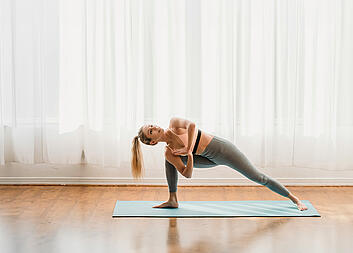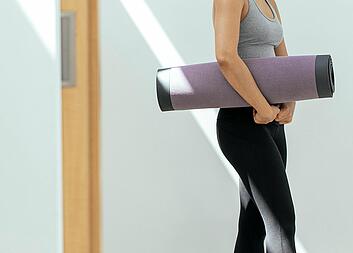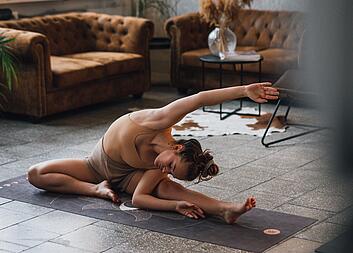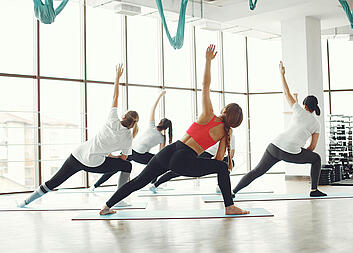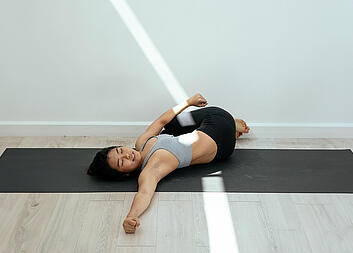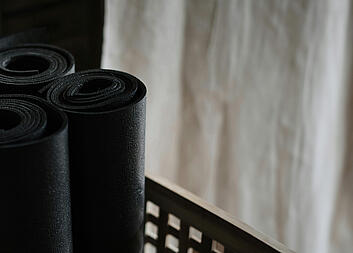Pilates is a versatile training method that is practised in different variations. These special forms offer different approaches and focuses so that everyone can find the right form for their needs.
Types of Pilates
Find out how modern forms of Pilates such as Powerpilates and Yogilates can enrich your training.

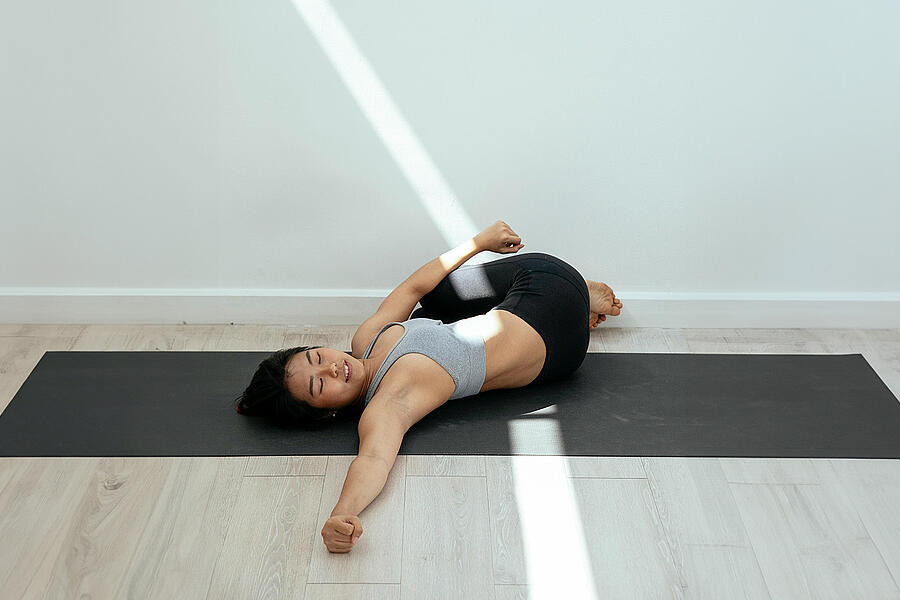
Powerhouse Pilates
Powerhouse Pilates focuses intensively on strengthening the central muscle groups that together form the so-called powerhouse or core of the body. This center consists of four important muscle groups: the pelvic floor, the corset muscle (transversus abdominis), the diaphragm, and the deep back muscles along the spine.
What is the Pilates Powerhouse?
The powerhouse, also known as the core, is the heart of Pilates training. These muscle groups work together to stabilize the spine and improve posture. Joseph Pilates emphasized the importance of a strong core and called this concept "powerhouse" because it is the main source of strength and stability in the body.
Activating the Powerhouse:
To activate the powerhouse, each Pilates exercise begins with a specific breathing technique and muscle engagement:
- Inhale deeply through the nose, expanding the lateral ribcage.
- Exhale through the mouth while gently pulling the navel towards the spine and lightly engaging the pelvic floor.
- Maintain this engagement while continuing to breathe calmly and performing the next movements.
This technique strengthens the deep muscles, which are often neglected even in active individuals. Regular training of the powerhouse improves posture, reduces back pain, and increases the overall stability of the body.
Benefits of Powerhouse Pilates:
- Promotes a stable and upright posture
- Strengthens the deep abdominal and back muscles
- Reduces back pain and prevents injuries
- Improves body awareness and balance
Cardiopilates
Cardiopilates combines the principles of classical Pilates with cardiovascular exercises. This form of training aims to increase the heart rate and improve endurance while strengthening the core muscles. By incorporating cardio elements such as jumping, running or dynamic movements, the workout becomes more intense and helps to burn calories.
Benefits of Cardiopilates:
- Improves cardiovascular fitness
- Increases endurance and performance
- Supports weight loss
- Strengthens the core muscles

Yogilates
Yogilates is a fusion of yoga and Pilates that combines the best elements of both disciplines. This form of exercise combines the flexibility and meditation aspects of yoga with the core stability and controlled movements of Pilates. Yogilates is particularly popular with those seeking both physical and mental benefits.
Benefits of Yogilates:
- Improves flexibility and mobility
- Promotes mental relaxation and mindfulness
- Strengthens the core muscles
- Combines the benefits of yoga and Pilates
Hot Pilates
Hot Pilates is performed in a heated room, similar to hot yoga. The increased room temperature helps to loosen the muscles and increase flexibility. Sweating also promotes detoxification of the body and can help burn calories. Hot Pilates is intense and can be challenging for those looking to intensify their Pilates practice.
Benefits of Hot Pilates:
- Increases flexibility through heat
- Promotes detoxification through sweating
- Improves blood circulation
- Intensifies the workout experience
Different types of Pilates
Pilates has evolved over time and offers various approaches based on different needs and training goals. Here are the main types of Pilates you should know about:
Mat Pilates
Mat Pilates is the most widespread form of Pilates, where all exercises are performed on a mat. This method primarily uses body weight to create resistance and can be practiced anywhere as it requires minimal equipment. Mat Pilates focuses on strengthening the core and improving flexibility through a series of movements and stretches.
Reformer Pilates
Reformer Pilates, also known as Pilates Reformer, utilizes a special apparatus developed by Joseph Pilates. The Reformer consists of a movable platform that provides resistance through springs. This type of Pilates allows for a greater variety of exercises and can adjust both the intensity and support for different movements. Reformer Pilates is ideal for increasing muscle strength, flexibility, and endurance.
Wall Pilates
Wall Pilates, also known as Wall Pilates, involves exercises performed against a wall. This method offers additional support and resistance, which can be particularly helpful for beginners or individuals with certain physical limitations. Wall Pilates helps promote proper body alignment and evenly strengthen the muscles.
Contemporary Pilates
Contemporary Pilates is a modern interpretation of classical Pilates techniques. This method integrates new movement approaches and scientific findings to further develop traditional exercises. Contemporary Pilates can include elements from other fitness disciplines such as yoga, dance, and physical therapy to provide a more comprehensive workout.
More on Pilates
